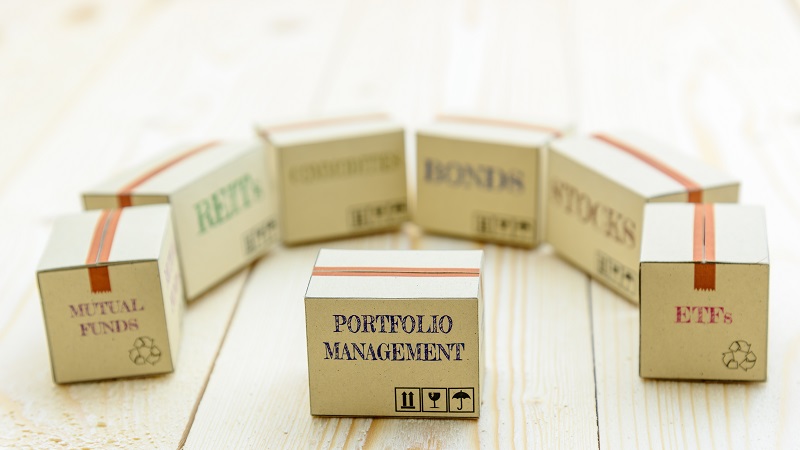2022 has been an extraordinary year for many reasons, but one of its defining characteristics has been rising correlations between different asset classes. Government bonds have provided no protection against falling equity markets, while rising interest rates have dented other potential diversifiers such as infrastructure. Recent data from FE fundinfo data shows that only around 10% of funds in the Investment Association universe have made a positive return since the start of the year.
The equity/bond correlation has been increasing over the past decade. Low interest rates pushed bond yields lower and prices higher, while also boosting equities. As this low interest rate environment has abruptly reversed, it has been bad for bonds and bad for equities. Holding bonds and equities, traditionally the bedrock of portfolio diversification, has therefore been useless in terms of protecting investors.
This is not out of the ordinary. Bonds and equities have usually shown greater correlation at times of high inflation. In a recent research piece, Nick Samouilhan, a multi-asset strategist at Wellington Management, explains this phenomenon: “Imagine that the equity market declines due to a deteriorating economic outlook. Markets would, given the experience of recent years, likely expect central banks to cut interest rates to spur demand and get the economy back on track. It is this expectation that has often generated the negative correlation: A worsened economic outlook is negative for equities but positive for duration when the response leads to lower rates.
“But this relationship does not work if central banks are also facing inflationary pressure, as they are now. In this case, central banks will be torn between either cutting rates (in response to the worsened economic outlook) or hiking rates (in response to higher inflation). If central banks decide to focus on inflation, as they have so far this year, then bonds will decline along with equities.”
Rising interest rates have also taken down other assets that might normally act as a diversifier. Infrastructure, for example, has struggled as the ‘risk free’ rate has risen. This has altered the way these assets are valued. While infrastructure funds have been largely flat since the start of the year, they have been weaker as it has become clear that the Federal Reserve is prioritising tackling inflation over economic growth and would continue to raise interest rates in the near term. Gold has provided a diversifier for much of the year, but this is also complicated – the opportunity cost of holding gold rises as real interest rates rise. As such, it may not provide significant protection in a tough environment if real interest rates are rising at the same time.
Investors have a number of options in this environment. They can wait it out. The environment is normalising and at some point, interest rates will cease to exert the same pull on markets. James de Bunsen, portfolio manager on the Janus Henderson Investors’ UK-based multi-asset team says: “Interest rates can go higher, but we’ve probably done a lot of it. The UK may not need significantly higher rates, though they may need to go a little higher in the US. On that basis, bonds can be a diversifier again. Until we’re through this phase where higher bond yields are causing everything else to go down, the negative correlation won’t be there, but it will come back.” He also believes there is a place for higher quality infrastructure and has kept exposure across the multi-asset portfolios.
Fully uncorrelated assets are harder to come by, especially those that work in all market environments. Charles Hovenden, portfolio manager at Square Mile Consulting and Research, says that investors need to hunt within the IA Targeted Absolute Return sector, but there are very few funds that do the job properly for investors. He says investors need to seek out market-neutral hedge fund-type strategies that have a strong track record of delivering in all market conditions. He suggests funds such as the Blackrock European Absolute Alpha fund, which is down just 1% since the start of the year.
Hovenden is not particularly keen on credit strategies, saying that their liquidity profile can leave them struggling in difficult market conditions when everyone heads for the exit at the same time. Equally, he says it is difficult to find a good global macro fund of the Standard Life GARS-style. Too often, he adds, fund managers are making binary bets based on their view of markets and few get it right with any consistency. He prefers funds such as Ruffer Total Return.
De Bunsen likes some of the systematic options, which take emotion out of the investment decision-making. Atlantic House Investments, for example, bases part of its strategy on volatility movements, meaning the fund tends to do well at times of significant market shocks. Hovenden believes the role of cash as a diversifier should not be neglected. It may struggle at times of higher inflation, but it has still done a lot better than many asset classes this year and has at least provided investors with some optionality.
In reality, finding the investment that can provide diversification in all market environments is tough and investors may be looking for it at the wrong moment. Interest rates may be about to become less of an issue for stock markets, neither rising nor falling rapidly. In this case, some familiar diversification patterns will re-emerge. Bonds and equities could once again provide the bedrock of a balanced portfolio.










